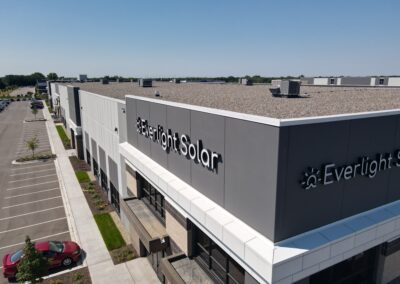Solar panels generate energy. So, when comparing solar panel options, output or wattage is an essential factor to consider. How much power do solar panels generate? When shopping around, you might see numbers like 245W, 300W, or 345W next to the panel’s name. These all refer to a solar panel’s wattage, capacity, and power output. All solar panels are rated by the amount of direct current (DC) power they product under standard test conditions (STC). These test conditions entail exposing the panels to UV rays at set temperatures. In fact, the variables are designed to mimic everyday external environments in which the solar panels would work. Solar panel output is expressed in watts (W). This unit represents the panel’s theoretical power production under ideal sunlight and temperature conditions. Most home solar panel shave power output ratings ranging from 250 to 400 watts.
Let’s look at an example: you are using solar panels rated at 290 W. So, you install 30 of those solar panels on your roof. This nets you 8.7kW for your solar system. Let’s say yogurt 5 hours of sunlight a day X 8.7kW. This outs you at 43.5 kWh of electricity produced per day. Take 43.5 and multiple by 365 days in a year; we get approximately 15,800 kWh, which is more than enough to power your home with solar.
Solar panel energy efficiency continues to increase with technology advancements. As a result, installing solar panels is a great option to go green and own your power. Understanding the full benefits and finding the best company ensures a great experience when switching to solar. Take advantage of clean, renewable energy produced at effective rates by contacting Everlight Solar for a free consultation today!




